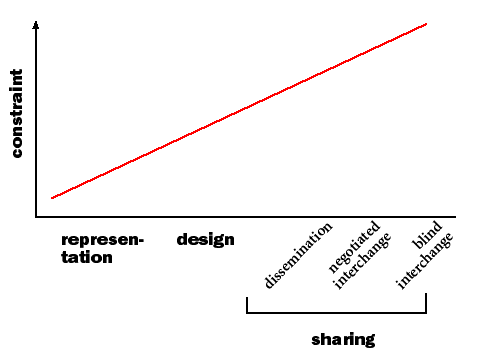![[CLS Framework]](images/clshead.gif)
![]()
![[CLS Framework]](images/clshead.gif)
|
TTT
Homepage
CLS Framework Introduction Section map Overview Applications: ·Representation ·Design ·Sharing ISO 12620 data categories Downloads XML information Copyright © 2000 Translation Research Group Send comments to comments@ttt.org Last updated: January 27, 2001 |
The CLS Framework can be applied to three areas, each with their own needs and particular features. These areas are:
These areas of application are listed in order of increasing constraint. For example, the preparation of terminological data imposes considerably more constraint on "how the data looks" than does representing an existing termbase which is not intended to be shared. This concept can be graphically represented as follows: 
How you apply the CLS Framework depends largely on what you intend to do with your termbase. If your intention is to represent an existing termbase for your own internal use, then the applications related to representation are needed; if you are looking at implementing a new termbase then the applications to design are needed; if you intend or envision sharing your terminological data with others the applications on sharing are needed. Whatever you intend to do with your data, the CLS Framework offers tools to assist in making the most of your terminological data.
| Return to ttt homepage | Introduction
| Section map | Overview
| |